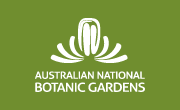What makes a good specimen?
Plants should be pressed as soon as possible after collection, before wilting. Specimens should be pressed flat and dried between sheets of semi-absorbent paper (e.g. newspaper) interleaved with sheets of thick cardboard or light plywood. The whole lot can be strapped together in a plant press, or stacked carefully with weights on top. Good air circulation is essential; presses dry well on a car roof-rack in fine weather.
In order to give you a as accurate an identification as possible, we need to know:
- Where the plant was collected? Distance from a town along what road, etc, and whether the plant was growing in full bush, disturbed or semi-urban bush, pasture, or in a garden. For wild plants, what sort of country was it - wet, dry/scrubby, tall forest, rocky slopes, river flat, etc. What other plants were around? Also note altitude, rock-type, soil-type, and latitude and longitude if known.
- What did it looked like? Was it a tree, shrub, prostrate (flat to ground) shrub, or a herb (non-woody plant), or climber? What colour were the flowers when fresh? What colour and texture was the bark? Did it root-sucker?
Samples about 30 cm long are usually adequate. They should be as complete as possible; i.e. they should include buds, flowers and/or fruits as well as a piece of stem bearing typical leaves. If leaf shape or size varies greatly on the plant, make a note and take separate pieces from different parts of the plant to represent the variation. For some plants, fruits and/or seeds are essential for a positive identification; e.g. Hakea, daisies and saltbushes.
Some plant groups are difficult to identify and we require special information:
Eucalypts
There are over 800 species, some very hard to distinguish. Specimens should include adult leaves, flower buds (better than open flowers!), fruits, and (when present) juvenile leaves from low on the plant or from suckers near the base of the trunk. You must make notes describing:
- the habitat (e.g. alpine, along a river bank, grassland or forest, disturbed area)
- the habit (height, one- or several-trunked)
- the type of bark (smooth, smooth with scribbles, rough stringy, rough flaky, rough and strongly ridged, etc).
If the bark is even partly rough, how far does this extend (just a sock near base, up to first branch, over trunk and main branches only, over fine twigs as well)?
If bark is more or less smooth all over, what colour(s) and patterns?
Acacias
Even more species than eucalypts. Collect adult leaves, juvenile leaves if present, flower buds just before opening, and mature pods if possible.
Fungi
Try to collect a range of individuals from immature to adult, and record colours and substrate. Dig out the whole fungus, including the base of the stalk. Wrap in greaseproof paper or place in brown paper (not plastic) bag. A spore print is useful - cut off an adult cap (if present), and place gill-side down on a sheet of white paper; cover with a bowl or bucket for a couple of hours until the spores drop onto the paper; send this carefully with the specimen. Speed is essential, especially with fleshy species.
Herbs (non woody plants)
For small herbs, collect one to several whole plants, including any underground storage organs (bulbs or tubers), or if plant is locally rare then leave these in ground and make notes on what these parts looked like (this allows the plant to regenerate - especially important for rare species, including many orchids).
Grasses (and grass-like plants, including rushes and sedges)
Collect whole plant or small clump, including roots. For grasses, make a note of whether the plant was easy to pull up (annual) or difficult to pull (usually a perennial). Grasses and sedges are best collected after the flowers have opened but before the fruits have dropped.
Grass Trees
Note the lengths of the flowering and non-flowering parts of the spike ("spear"), and of the trunk (if any) below the leaves. The middle part of the spike (including the base of the flowering/fruiting portion and the top of the smooth portion) should be collected, as should a few complete leaves, including the leaf bases if possible. Be very careful not to damage the plant when collecting leaf bases; grass trees (Xanthorrhoea) grow very slowly and may be a hundred or more years old.
Water plants
Do not keep in water after collection. Drain excess water off and lay the plant between newspaper sheets for a few minutes, then press and dry between fresh papers. Change paper if required.
Ferns
Include both fertile (spore-bearing) and sterile fronds, as well as part of the rhizome (creeping "root") if there is one, and the base of the stipe (leaf stalk). For Tree Ferns, collect a portion of a fertile frond, and the base of the stipe with any scales or hairs.
Algae
Will not be identified by the ANBG herbarium. Small (often microscopic) algae from blooms in rivers or dams can be collected in a waterproof container in the water in which they were found; keep refrigerated. They can be identified by the local Water Resources authority, who will give instructions on how to send samples. Large algae (e.g. seaweeds) can be collected as for water plants (above), and should be sent to The Enquiry Counter, National Herbarium of NSW, Mrs Macquaries Rd, Sydney NSW 2000.
Mosses, Lichens, Liverworts
Try to include fruiting bodies (tiny capsules or disks or "umbrellas" on stalks, or cupped to spherical appendages). Remove a few square centimetres of the plant mat gently from the substrate or (if adhering closely to bark, soil crust, or rock) cut or chip away pieces of the substrate with the plant in place. If specimen is bulky or very wet, flatten it very carefully. Do not squash or press - place each specimen in a separate paper (not plastic) bag with a collection number and notes, and allow to air dry. Pack well to avoid squashing before mailing.
Specimens for the Herbarium
Your specimens, even of common species, are scientifically valuable, and may be incorporated into the Herbarium. Good data is essential for such collections. It is worth remembering also that many new species turn up initially as one-off collections by wildlife management personnel who see an anomalous plant and send it to an accredited herbarium for identification.
For more detailed collecting information see 'An Introduction to Collecting Plants'.
![An Australian Government Initiative [logo]](/images/austgovt_canbr_90px.gif)




